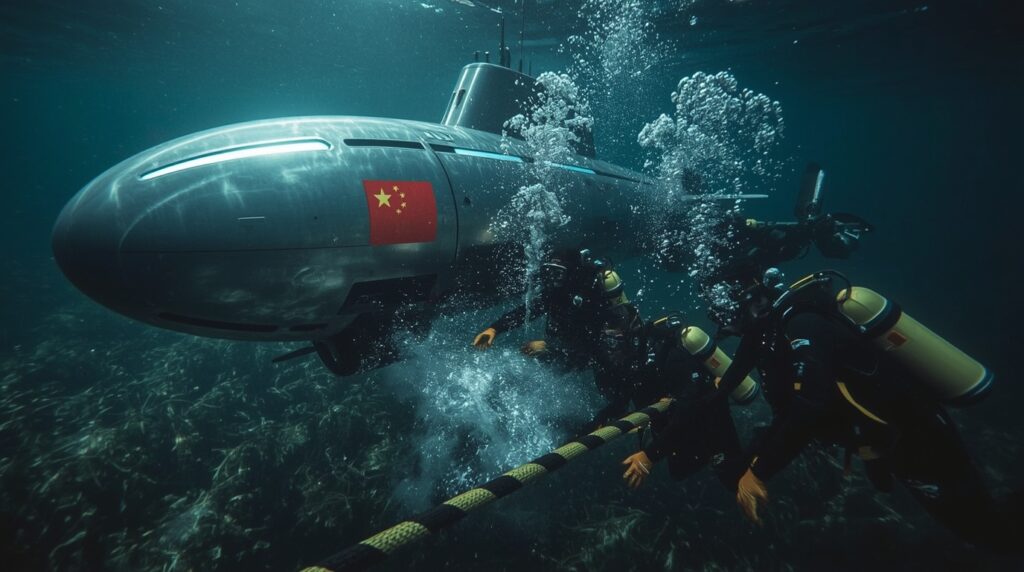
In the Taiwan Strait, the local Coast Guard ha intensified patrolling activities To protect the undersea cables, infrastructure considered vital to the country’s communications. Commander Ruan Zhongqing led a 100-ton patrol boat, equipped with water cannons and machine guns, towards the “Taiwan-Pengzhou No. 3” cable to monitor any suspicious vessels. According to authorities, these links have become a new target of Chinese operations in the so-called “gray zone.”
The Taiwan-Penghu 3 cable is one of 24 that connect the island to national and international networks. Attention to these infrastructures has increased after a Chinese captain was convicted in June for deliberately cutting the cable. A similar incident saw the detention of a cargo ship financed by Chinese interests, suspected of damaging another link.
Technician Nguyen Trung Khanh emphasized that the war in the gray zone aims to gradually consume Taiwan’s resources. His patrol boat escorted the Chinese vessel “Hongtai 58” after an hours-long cable disruption, denouncing the destabilizing impact of such intrusions on the island’s security. The patrols added that activities to identify and stop sabotage activities have been intensified.
The Taiwanese government reported two incidents of suspicious damage, attributed to Chinese vessels, one of which occurred in the north of the country. For its part, China’s Taiwan Affairs Office declined to comment, but previously accused Taipei of exaggerating the problem. Meanwhile, Taiwan has strengthened its surveillance measures, taking example from sabotage incidents in the Baltic Sea.
Lin Fei-fan, deputy secretary-general of the National Security Council, said that Taiwan takes these types of threats very seriously, due to its geographic proximity to China and the concentration of cables in particularly vulnerable areas. The German Navy, he added, is engaged in NATO patrols in the Baltic, where sabotage is frequent.
Taiwan’s surveillance system provides automatic alerts in the event of suspicious approach within a kilometer from the cables, with progressive responses ranging from radio warnings to patrol boats. However, the Coast Guard has limited resources: eight vessels and approximately 500 personnel are required not only to defend the cables, but also to manage rescue operations and maritime controls. Currently, 96 Chinese vessels are under surveillance, many of which fly flags of convenience.
Taipei authorities are also monitoring approximately 400 Chinese vessels, suspected of having been adapted for military purposes. The information is shared in real time with countries considered “like-minded,” as part of international cooperation. Meanwhile, Captain Jian Richeng has warned of the risk posed by old Chinese vessels, easily used as tools of sabotage, capable of compromising Taiwan’s social stability with few resources.
Follow us on Google News to receive daily updates on cybersecurity. Contact us if you would like to report news, insights or content for publication.
